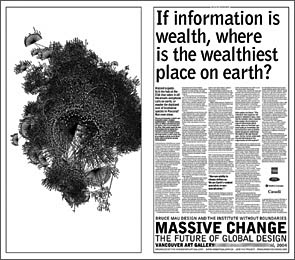
Massive change inetwork how to#
What began as a career in book and typographic design has evolved into one where his Chicago-based Massive Change Network, through its Massive Action project, is considering how to redesign communications, sustainability, even democracy. It’s also key to the narrative that MAU builds of a designer who rejects defeatism to imagine better outcomes, not just for himself but also for the global community. It’s a powerful moment we don’t often get in films like this, which tend to smooth over rough edges in pursuit of slick hagiography. The Bergmanns take him to his old house, now abandoned, and film him taking stock of what’s there, the life he left behind, and the one he made for himself. “I don’t care about those boundaries.” As artist and friend James Lahey puts it, “He had a lot of gas in the tank.”Įven more potent is the time we spend with Mau as he revisits the place he once thought of as a “valley coated in Vaseline,” where if he returned to his old life he'd slide back down and never reemerge. “I just don’t care about your stupid disciplines,” he says. He decided, instead, to build his own studio to work on projects to improve the world. “It felt like I was building a cage I was going to have to live in,” as he puts it. He then headed to London and a two-year stint with Pentagram, an experience he describes in the film as “deeply disappointing.” Too corporate, not enough room for his creativity to expand. Too prescribed, too narrow for his creative impulse. The road out was acceptance to the Ontario College of Art-where Mau spent all of 18 months before dropping out.

We meet friends and collaborators who all testify to Mau’s single-minded determination to leave his old life behind.

I saw this extraordinary world and wanted to be part of it,” he recalls in the film.
Massive change inetwork tv#
That world was all Mau knew until he saw TV reports from Expo 67 in Montreal, an event that might as well have taken place in another universe but all the same set him on his path to becoming a designer. (Indeed, NASA sent astronauts there to train for lunar missions.) We learn about Mau’s “wild” childhood with an alcoholic father in a combustible household. They show us clips of the town from the 1960s, when Mau was a boy-a gray and barren wasteland that looks more like the moon than Earth. The Bergmanns buck the convention in part by leaning hard into Mau’s upbringing in Sudbury, a small nickel-mining town in Ontario.


 0 kommentar(er)
0 kommentar(er)
